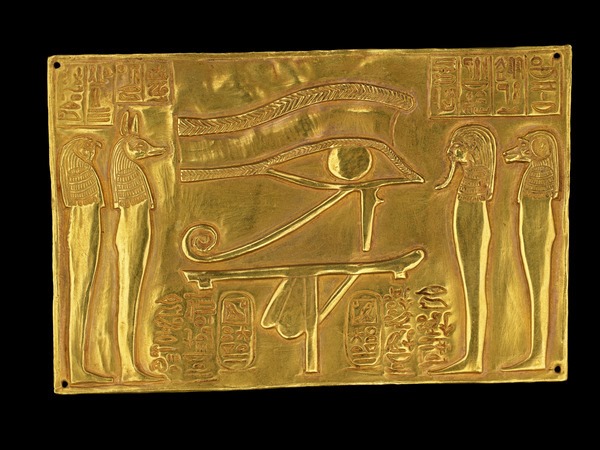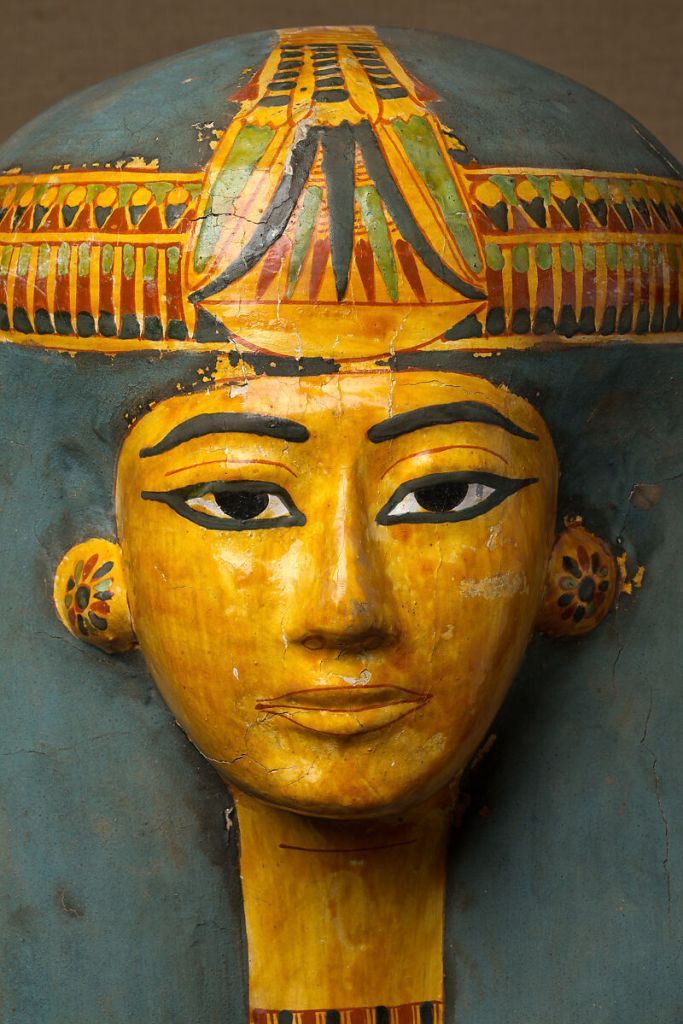Introduction: A Golden Testament to Ancient Beliefs
The embalming plaque of Queen Henut-tawy, mother of King Psusennes I (circa 1040–992 BCE), serves as a profound example of ancient Egyptian mortuary practices during the 21st Dynasty of the Third Intermediate Period. Crafted from pale gold, this exquisite artifact was not merely ornamental but played a crucial role in the sacred mummification process. As an ‘embalming plate’ or ‘incision plate,’ it was designed to seal the incision made in the abdomen during the extraction of internal organs, ensuring spiritual protection and the body’s integrity for the afterlife.

The Ritual Significance of Embalming Plaques
Artifacts like this embalming plaque have been documented from the New Kingdom through the Late Period. They were integral to the mummification process, symbolizing the transition of the deceased into the afterlife. Positioned over the embalming incision, these plaques acted as safeguards, both physically and spiritually, signifying the deceased’s readiness for their journey to eternity.
Iconography and Inscriptions: Divine Protection in Detail
At the heart of Queen Henut-tawy’s plaque is the Eye of Ra, a powerful emblem of protection, healing, and divine watchfulness. Resting atop a divine standard, this motif epitomizes the gods’ benevolence and their role in guiding the deceased. To the right of the plaque are depictions of Imsety and Hapy, two of the four sons of Horus, revered as guardians of the liver and lungs, respectively. These deities played a pivotal role in the preservation of vital organs, which were placed in canopic jars during the mummification ritual.

The inscriptions surrounding these motifs reveal Queen Henut-tawy’s name and titles, affirming her royal stature and connection to divine protection. The precise craftsmanship and rich symbolism embedded in the plaque underscore the importance of ensuring the queen’s safe passage into the afterlife.
Historical and Cultural Context
This artifact hails from a period of significant political and religious evolution in Egypt. The Third Intermediate Period was marked by decentralization and shifts in mortuary traditions. Despite the changing political climate, the enduring importance of mummification rituals highlights the Egyptians’ unwavering focus on the afterlife and the divine.
Preservation and Legacy
Now housed in the Museum of Egyptian Antiquities in Cairo (JE 41586), Queen Henut-tawy’s embalming plaque continues to captivate historians and visitors alike. It serves as a window into the elaborate and deeply spiritual practices of ancient Egypt. This piece not only reflects the technical skill of its creators but also offers profound insights into the cultural and religious priorities of its time.
Conclusion: A Golden Link to the Afterlife
Queen Henut-tawy’s embalming plaque stands as a testament to the intricate interplay between art, religion, and ritual in ancient Egypt. Its blend of functionality, symbolism, and artistic excellence embodies the reverence Egyptians held for their dead and their belief in an eternal afterlife. Such relics continue to inspire awe and provide invaluable knowledge about one of history’s most fascinating civilizations.

